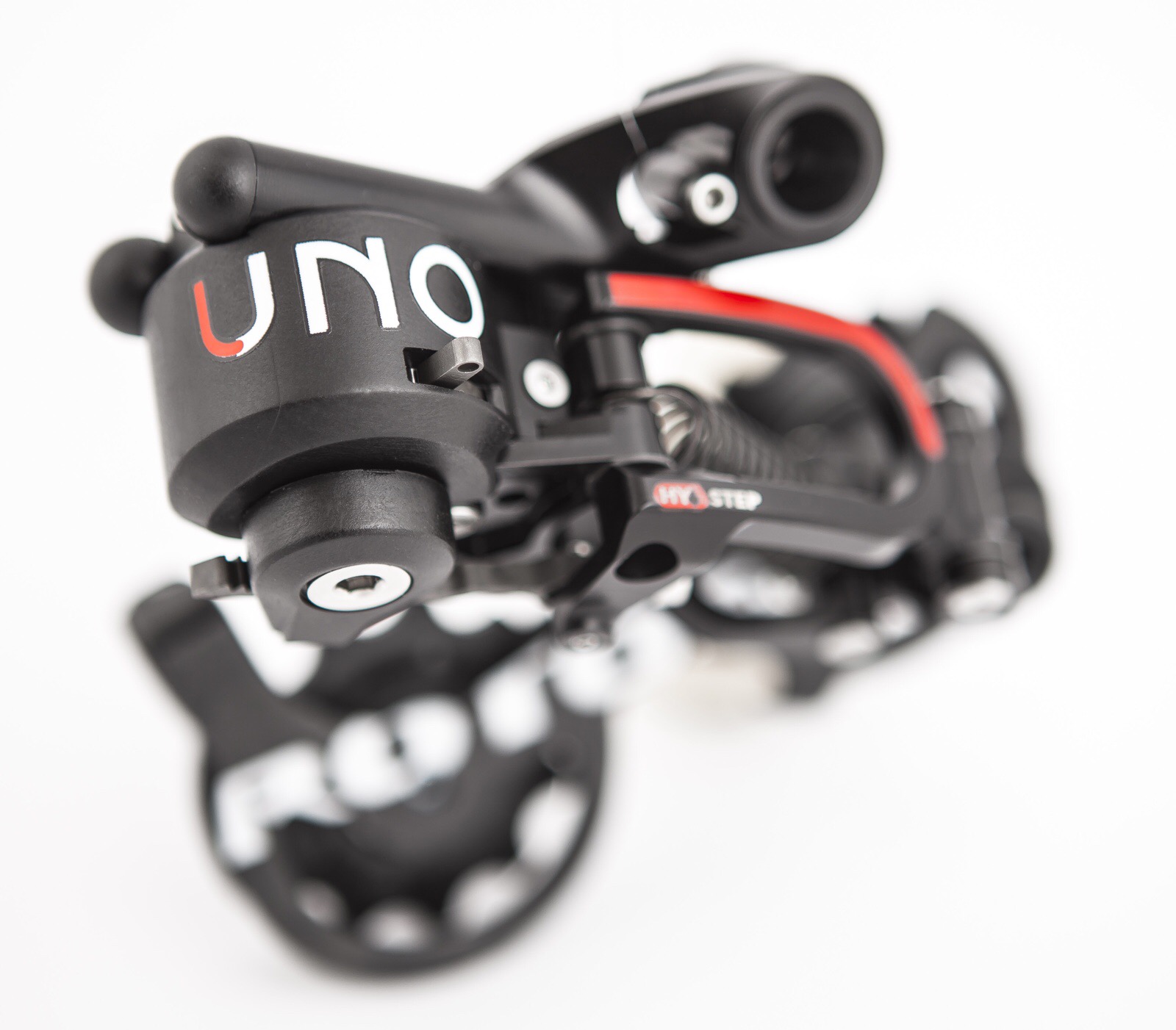Just days after we found the patent drawings and a mere week before Eurobike starts, Rotor has provided the first look at their all-new Uno road group.
Using a full hydraulic system for both brakes and shifting, the components should offer fluidly smooth gear changes and powerful braking. The hydraulic tech comes from Magura, whose been making hydraulic brakes for a long, long time and will provide the brakes for the complete group set.
All the tech details will come next week, and we’ve got the first appointment of the show booked to see it. In the meantime, more pics below…
Because the system relies on short and long throws of the lever to create up and downshifts, only one shift paddle is necessary behind the brake lever.
The oversized body on the top of the front derailleur (and back of the rear mech) likely houses the ratcheting mechanism, putting the weight lower on the bike and reducing bulk on the shift levers. The units will be handbuilt and assembled in Europe. Here’s the bulk of the press release:
PRESS RELEASE: ROTOR Bike Components hopes to capitalize on its worst kept secret about a debut groupset from the Spanish brand when the 24th annual Eurobike throws open its doors next week. After six years in development, ROTOR UNO will publicly stake a claim as the first complete road groupset with hydraulic actuation shifting and braking. By partnering with Magura to produce ROTOR UNO’s brake systems (both disc and rim), ROTOR will leverage more than a century’s-worth of expertise in hydraulic brake systems. ROTOR UNO´s Eurobike debut precedes its global product launch scheduled for spring 2016.
“Our initial idea was to improve upon existing shifting systems; we knew that our system was a small step forward with its increased precision compared with other cable-actuated systems but we still suffered the same disadvantages of those systems, like friction, devolving inconsistent force over time, and other inconveniences,” said Pablo Carrasco, co-founder and chief innovation officer for ROTOR. “We knew that disc brakes for road were about to become a reality and we challenged ourselves to further the concept and apply hydraulics to actuate shifting as well.”
Hydraulic technology had already been implemented in the areas of brake and suspension systems; ROTOR sought to apply that same technology to shifting. ROTOR UNO seized its prerequisites from popular groupset features but ROTOR wanted to radically improve upon those features in a manner inline with the company’s vision to lead through innovation. Smooth activation, low maintenance, multiple shifting positions, both rim and disc hydraulic brake options, internal hose routing, and low “ride” weight emerged as key characteristics integral to the state-of-the-art groupset.
“Hydraulic systems are already something we use everyday without thinking twice,” said Carlos Cartón lead engineer for the ROTOR UNO project, “in car brakes, construction equipment, and airplanes. So it made sense to apply this proven technology to bicycle transmission, where the advantages are really clear.”
Stay tuned for full coverage from Eurobike next week!


